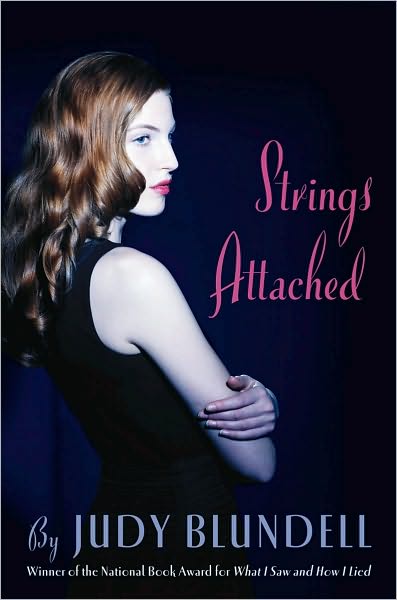
 Set in the same era as her National Book Award–winning What I Saw and How I Lied, Blundell's latest riveting novel intertwines threads of romance, organized crime and murder with an aspiring actress's coming-of-age story. The story begins in October 1950, as 17-year-old narrator Kit Corrigan performs in a Broadway musical. She spies Nate Benedict in the audience, just before the end of the second act. This so unhinges Kit that she trips up a fellow chorus girl. Kit knows Mr. Benedict from her hometown, Providence, R.I., from which she fled just a few weeks before. There she was known as one of The Corrigan Three, a performing triplets act with her brother and sister. He was called "Nate the Nose Benedict" because of a fight that broke his nose in his youth. Nowadays, nobody messes with Nate. He's the attorney for New York gangster Frank Costello.
Set in the same era as her National Book Award–winning What I Saw and How I Lied, Blundell's latest riveting novel intertwines threads of romance, organized crime and murder with an aspiring actress's coming-of-age story. The story begins in October 1950, as 17-year-old narrator Kit Corrigan performs in a Broadway musical. She spies Nate Benedict in the audience, just before the end of the second act. This so unhinges Kit that she trips up a fellow chorus girl. Kit knows Mr. Benedict from her hometown, Providence, R.I., from which she fled just a few weeks before. There she was known as one of The Corrigan Three, a performing triplets act with her brother and sister. He was called "Nate the Nose Benedict" because of a fight that broke his nose in his youth. Nowadays, nobody messes with Nate. He's the attorney for New York gangster Frank Costello.
Their terse conversation after the show reveals that Nate's son, Billy, had wanted to marry Kit. Now Billy's about to ship out to Korea. Flashbacks fill in the scene of Kit and Billy's parting: he flew into a rage after witnessing a flirty exchange between Kit and a movie star with whom she'd once done summer stock. Billy's response was to smash the star's car, then enlist in the army. Now Nate, having tracked Kit to Manhattan, wants to set Kit up in an apartment he owns near the newly built U.N. building: "Take the key. No strings," he says. Except that, as Billy put it, Nate "runs his life on debts." Next, Nate "pull[s] strings" to get Kit an early audition at the Lido, where Sinatra and Ethel Merman performed. Then, when she wins a coveted spot as a Lido Doll, he asks her to keep tabs on some of Costello's men. Suddenly, the big city feels claustrophobic.
Blundell demonstrates the strict rules of the era--gangs defined by ethnic groups and economic class, and women limited to secretarial and teaching jobs. But she also instills in Kit and Billy the timeless feeling that love makes everything possible. Kit and Billy believe that they can pursue their dreams of marriage, alongside hers of a life in the theater, and his passion for photography. The author lets us know that Kit has what it takes as she approaches the Lido for her tryout, "The trick to auditions? You've got to not mind that they're bored, or that they're thinking about the last girl, or that they're dying for a smoke. You've got to think about your own joy." Kit also recognizes Billy as a fellow artist when, at age 12, she sees his photos for the first time: "If I could do that, I'd do it all the time," she tells him. She knows the traditional path would kill her dreams: "I'd seen too many girls go off in their white gowns and bouquets.... I'd seen them at twenty-two with two or three kids hanging on their skirts. I'd seen them disillusioned at thirty, not in love, not even satisfied, just trapped." Blundell transforms Kit's chastity into a feminist stance.
The author gets all the details right. Secondary characters spring to life, such as neighbor boy Hank Greeley, whose parents are under surveillance for "subversive activities," and Daisy Meadows, who "studied with Stella Adler [and] was part of a world [Kit] couldn't imagine--late nights in Greenwich Village jazz clubs, hard study with tough teachers, a tribe of actors searching for truth in a gesture." Subthemes take on greater reverberations with a second and third rereading, such as Nate's words to 12-year-old Kit during the intermission of Carousel, which she attends with her Aunt Delia, "I think the lesson of the play is that we can't always have what we want." The pace will keep the pages turning, but the ideas within them will keep readers thinking long after they've closed the covers.--Jennifer M. Brown

